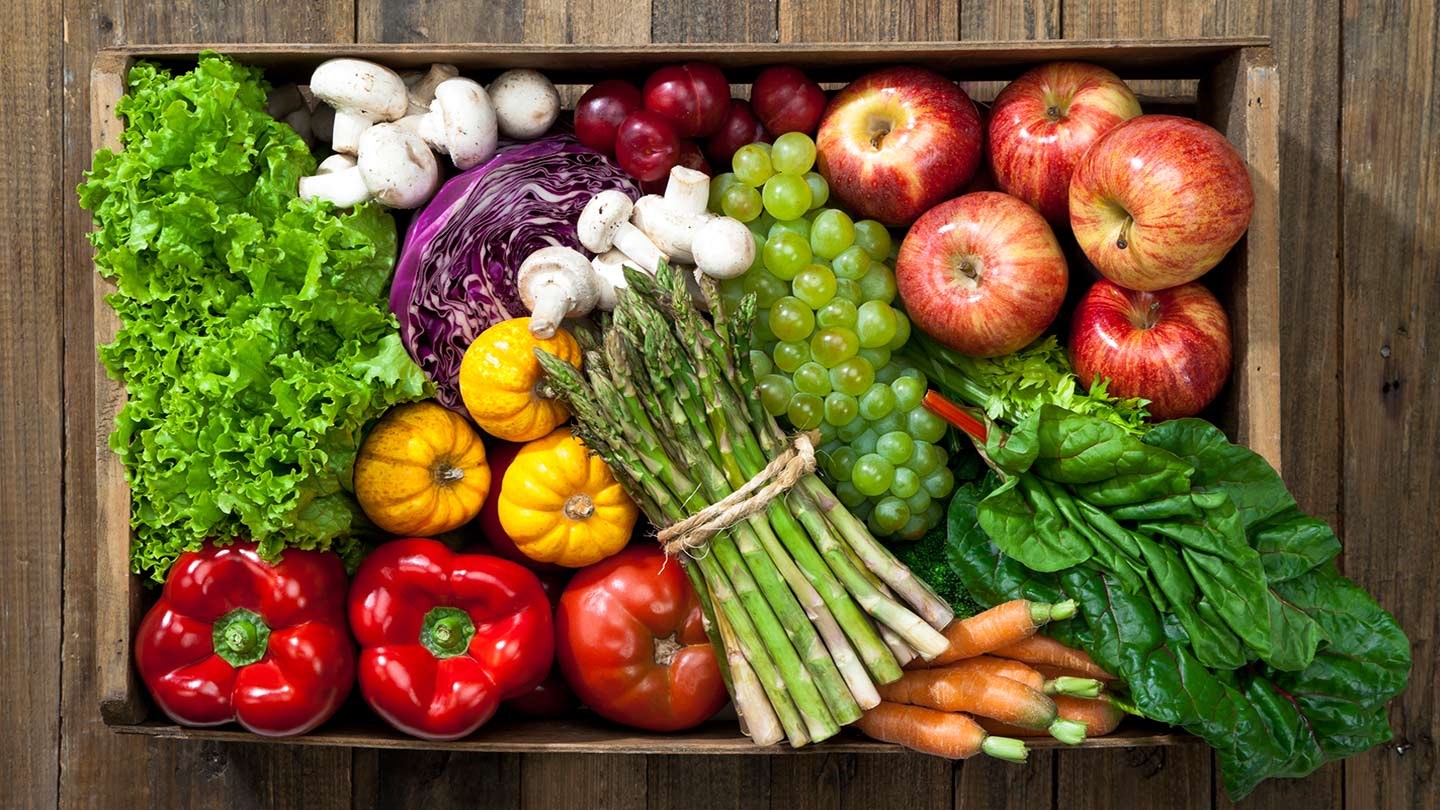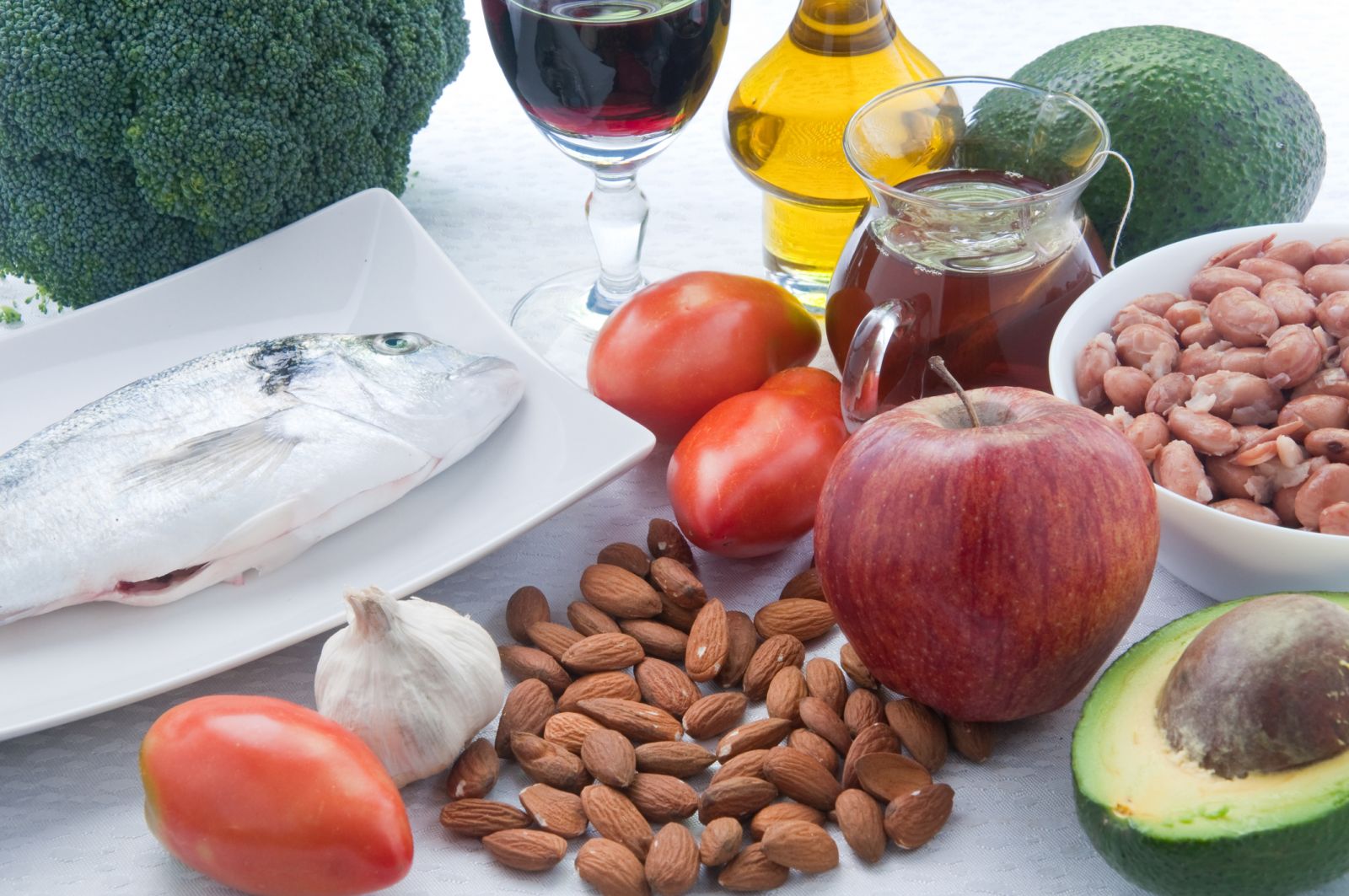
Contents
- The Low Cholesterol Diet
- 1) Oatmeal, oat bran and high-fiber foods
- 2) Fish and omega-3 fatty acids
- 3)Walnuts, almonds and other nuts
- 4) Avocados
- 5) Olive oil
- 6) Soy protein
- 7) Foods with added plant sterols or stanols
- 8) Whey protein
- 9) Beans and Legumes
- 9) Eggplant and okra
- 11) Other changes to your diet
- 12) Becoming more physically active
- 13) Quitting smoking
- 14) Losing weight
The Low Cholesterol Diet
Diet can play an important role in raising or lowering your cholesterol. We all know that butter, ice cream, and fatty meats raise cholesterol, but do you know which foods make up a low-cholesterol diet ?
A largely vegetarian “dietary portfolio of cholesterol-lowering foods” substantially lowered LDL, triglycerides, and blood pressure. The key dietary components are plenty of fruits and vegetables, whole grains instead of highly refined ones, and protein mostly from plants. Add margarine enriched with plant sterols; oats, barley, psyllium, okra, and eggplant, all rich in soluble fiber; soy protein; and whole almonds.Just as important, a diet that is heavy on fruits, vegetables, beans, and nuts is good for the body in ways beyond lowering cholesterol. It keeps blood pressure in check. It helps arteries stay flexible and responsive. It’s good for bones and digestive health, for vision and mental health 1.
Here are the top foods to lower your cholesterol and protect your heart.
1) Oatmeal, oat bran and high-fiber foods
Current nutrition guidelines recommend getting 20 to 35 grams of fiber a day, with at least 5 to 10 grams coming from soluble fiber. The average American gets about half that amount. Oatmeal contains soluble fiber, which reduces your low-density lipoprotein (LDL), the “bad” cholesterol. Soluble fiber is also found in such foods as kidney beans, apples, pears, barley and prunes.
Soluble fiber can reduce the absorption of cholesterol into your bloodstream. Five to 10 grams or more of soluble fiber a day decreases your total and LDL cholesterol. Eating 1 1/2 cups of cooked oatmeal provides 6 grams of fiber. If you add fruit, such as bananas, you’ll add about 4 more grams of fiber. To mix it up a little, try steel-cut oatmeal or cold cereal made with oatmeal or oat bran.
2) Fish and omega-3 fatty acids
Eating fatty fish can be heart healthy because of its high levels of omega-3 fatty acids, which can reduce your blood pressure and risk of developing blood clots. In people who have already had heart attacks, fish oil — or omega-3 fatty acids — may reduce the risk of sudden death.
Although omega-3 fatty acids don’t affect LDL levels, because of their other heart benefits, the American Heart Association recommends eating at least two servings of fish a week. The highest levels of omega-3 fatty acids are in:
- Mackerel
- Lake trout
- Herring
- Sardines
- Albacore tuna
- Salmon
- Halibut
You should bake or grill the fish to avoid adding unhealthy fats. If you don’t like fish, you can also get small amounts of omega-3 fatty acids from foods such as ground flaxseed or canola oil.
You can take an omega-3 or fish oil supplement to get some of the benefits, but you won’t get other nutrients in fish, such as selenium. If you decide to take a supplement, talk to your doctor about how much you should take.
3)Walnuts, almonds and other nuts
Walnuts, almonds and other tree nuts can improve blood cholesterol. Rich in mono- and polyunsaturated fatty acids, walnuts also help keep blood vessels healthy.
Eating about a handful (1.5 ounces, or 42.5 grams) a day of most nuts, such as almonds, hazelnuts, peanuts, pecans, some pine nuts, pistachio nuts and walnuts, may reduce your risk of heart disease. Make sure the nuts you eat aren’t salted or coated with sugar.
All nuts are high in calories, so a handful will do. To avoid eating too many nuts and gaining weight, replace foods high in saturated fat with nuts. For example, instead of using cheese, meat or croutons in your salad, add a handful of walnuts or almonds.
4) Avocados
Avocados are a potent source of nutrients as well as monounsaturated fatty acids (MUFAs). According to a recent study, adding an avocado a day to a heart-healthy diet can help improve LDL levels in people who are overweight or obese.
People tend to be most familiar with avocados in guacamole, which usually is eaten with high-fat corn chips. Try adding avocado slices to salads and sandwiches or eating them as a side dish. Also try guacamole with raw cut vegetables, such as cucumber slices.
Replacing saturated fats, such as those found in meats, with MUFAs are part of what makes the Mediterranean diet heart healthy.

5) Olive oil
Another good source of MUFAs is olive oil.
Try using about 2 tablespoons (23 grams) of olive oil a day in place of other fats in your diet to get its heart-healthy benefits. To add olive oil to your diet, you can saute vegetables in it, add it to a marinade or mix it with vinegar as a salad dressing. You can also use olive oil as a substitute for butter when basting meat or as a dip for bread.
Both avocados and olive oil are high in calories, so don’t eat more than the recommended amount.
6) Soy protein
Adding tofu to your stir-fry, soy milk to your morning bowl of oatmeal, or edamame as a snack can be a good move if you’re working on improving your cholesterol level.
Some studies suggest that soy protein may help, but the evidence isn’t strong, so you’ll definitely want to make other changes to your diet to help your cholesterol, too.
Eating soy foods may help lower your LDL (“bad”) cholesterol by about 3%. That’s very little, but when you’re trying to take advantage of everything you can do for your cholesterol, it’s worth considering.
Soy is also a good source of protein, fiber, and heart-healthy omega-3s (though not the same kind that you get in salmon or tuna). Plus, soy is naturally cholesterol-free and low in saturated fat.
Soy sauce and soybean oil don’t contain soy protein, even though “soy” is part of their name.
7) Foods with added plant sterols or stanols
Plant sterols and stanols are substances that occur naturally in small amounts in many grains, vegetables, fruits, legumes, nuts, and seeds. Since they have powerful cholesterol-lowering properties, manufacturers have started adding them to foods. You can now get stanols or sterols in margarine spreads, orange juice, cereals, and even granola bars.
Plant stanol esters help block the absorption of cholesterol. They can prevent real cholesterol from being absorbed into your bloodstream.
Foods are available that have been fortified with sterols or stanols — substances found in plants that help block the absorption of cholesterol.
Some margarines, orange juice and yogurt drinks come with added plant sterols and can help reduce LDL cholesterol by 5 to 15 percent. The amount of daily plant sterols needed for results is at least 2 grams — which equals about two 8-ounce (237-milliliter) servings of plant sterol-fortified orange juice a day.
It’s not clear whether food with plant sterols or stanols reduce your risk of heart attack or stroke, although experts assume that foods that reduce cholesterol do reduce the risk. Plant sterols or stanols don’t appear to affect levels of triglycerides or of high-density lipoprotein (HDL), the “good” cholesterol.
8) Whey protein
Whey protein, which is one of two proteins in dairy products — the other is casein — may account for many of the health benefits attributed to dairy. Studies have shown that whey protein given as a supplement lowers both LDL and total cholesterol.
You can find whey protein powders in health food stores and some grocery stores. Follow the package directions for how to use them.
9) Beans and Legumes
Beans are especially rich in soluble fiber. They also take a while for the body to digest, meaning you feel full for longer after a meal. That’s one reason beans are a useful food for folks trying to lose weight. With so many choices — from navy and kidney beans to lentils, garbanzos, black-eyed peas, and beyond — and so many ways to prepare them, beans are a very versatile food.
9) Eggplant and okra
These two low-calorie vegetables are good sources of soluble fiber.
11) Other changes to your diet
For any of these foods to provide their benefit, you need to make other changes to your diet and lifestyle.
Although some fats are healthy, you need to limit the saturated and trans fats you eat. Saturated fats, like those in meat, butter, cheese and other full-fat dairy products, and some oils, raise your total cholesterol. Trans fats, often used in margarines and store-bought cookies, crackers and cakes, are particularly bad for your cholesterol levels. Trans fats raise LDL cholesterol, and lower high-density lipoprotein (HDL), the “good” cholesterol.
Food labels report the content of trans fats, but, unfortunately, only in foods that contain at least one gram per serving. That means you could be getting some trans fats in a number of foods, which could add up to enough trans fats in a day to be unhealthy and increase cholesterol. If a food label lists “partially hydrogenated oil,” it has trans fat, and it’s best to avoid it.
In addition to changing your diet, making other heart-healthy lifestyle changes is key to improving your cholesterol. Exercising, quitting smoking and maintaining a healthy weight will help keep your cholesterol at a healthy level.
To be smarter about what you eat, you’ll also need to pay more attention to food labels, if you don’t already read them.
12) Becoming more physically active
A sedentary lifestyle lowers HDL cholesterol. Less HDL cholesterol means there’s less good cholesterol to remove LDL (bad) cholesterol from arteries.
Physical activity is important. Just 40 minutes of aerobic exercise of moderate to vigorous intensity done three to four times a week is enough to lower both cholesterol and high blood pressure. Brisk walking, swimming, bicycling or a dance class are examples. Learn more about getting active.
13) Quitting smoking
Smokers can lower their cholesterol levels and help protect their arteries by quitting. Nonsmokers should avoid exposure to secondhand smoke.
Smoking lowers HDL cholesterol. When a person with high cholesterol also smokes, their risk of coronary heart disease increases more than it otherwise would. Smoking compounds risk from other risk factors for heart disease, too, such as high blood pressure and diabetes. Learn more about quitting smoking.
14) Losing weight
Being overweight or obese tends to raise LDL cholesterol and lower HDL cholesterol.
Losing excess weight can improve cholesterol levels. A weight loss of 10 percent can go a long way toward lowering your risk of high cholesterol — or reversing it.
- Harvard University. Harvard Health Publications. 11 foods that lower cholesterol. http://www.health.harvard.edu/heart-health/11-foods-that-lower-cholesterol[↩]




